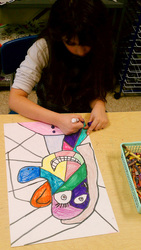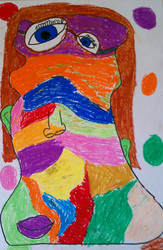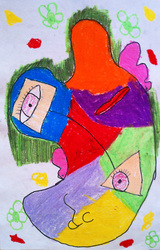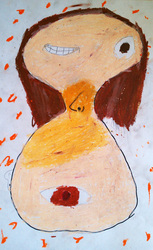Picasso (style) Self-Portraits
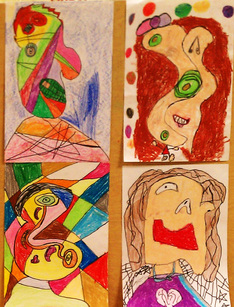
Start off by looking at works of art by Pablo Picasso. Compare and contrast his style (Cubism) with that of more realistic portraiture. Have a discussion with students. How are the faces similar? How are they different? Have the students take note of how certain facial features are larger, smaller, repositioned on the face and how the shape of the face and head can be very different from a "normal" portrait. Students will gain an understanding and appreciation of Picasso and his style.
Next, have students create a pencil drawing of themselves. Their drawing must resemble a Picasso-style portrait, in that their facial features (head,eyes,nose,mouth,ears,...etc) are not in traditional places nor are they traditional shapes. Once students are happy with their pencil drawing, have them color in their drawing using oil pastel. It gives it a painterly look while still using a dry-medium.
Special Notes: For best results, really encourage students to vary the shapes and sizes of different facial features and to create a portrait that is LARGE. I instructed the students to fill as much of the paper with their face as they could.
Supplies: Picasso reference material, paper, pencils, erasers, oil pastels
Next, have students create a pencil drawing of themselves. Their drawing must resemble a Picasso-style portrait, in that their facial features (head,eyes,nose,mouth,ears,...etc) are not in traditional places nor are they traditional shapes. Once students are happy with their pencil drawing, have them color in their drawing using oil pastel. It gives it a painterly look while still using a dry-medium.
Special Notes: For best results, really encourage students to vary the shapes and sizes of different facial features and to create a portrait that is LARGE. I instructed the students to fill as much of the paper with their face as they could.
Supplies: Picasso reference material, paper, pencils, erasers, oil pastels
